16 Best Homeopathy Medicines For Skin Diseases
Understand the science behind the usage and application of these therapeutic formulations.
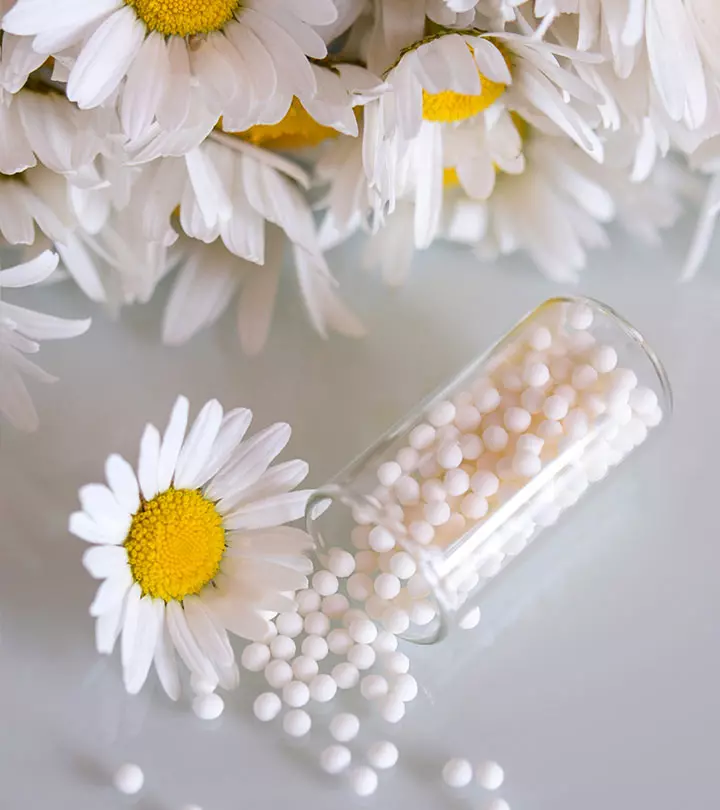
Image: Shutterstock
You can say that something’s wrong with your skin by merely glancing at it, but quite often, you don’t know why the issue occurred in the first place. While topical creams treat acne, blemishes, rosacea, pigmentation, wrinkles, and multiple other skin issues within days, the chances of recurrence are high. The good news is there are several homeopathic treatments for skin problems that address the issue from the roots and train your body to fight them. Homeopathy is a form of alternative medicine with a wide range of treatments in dermatology, like skin allergies, rashes, pimples, acne, and other skin diseases. It also provides a host of holistic wellness treatments.

In this article, we have discussed all the whats, hows, and whys of homeopathy skin treatment, along with some remedies for common skin diseases. Additionally, we have discussed the risks of using homeopathic medication without professional supervision. Continue reading to know more.
In This Article
Homeopathic Medicine For Skin Diseases: How Does It Work?
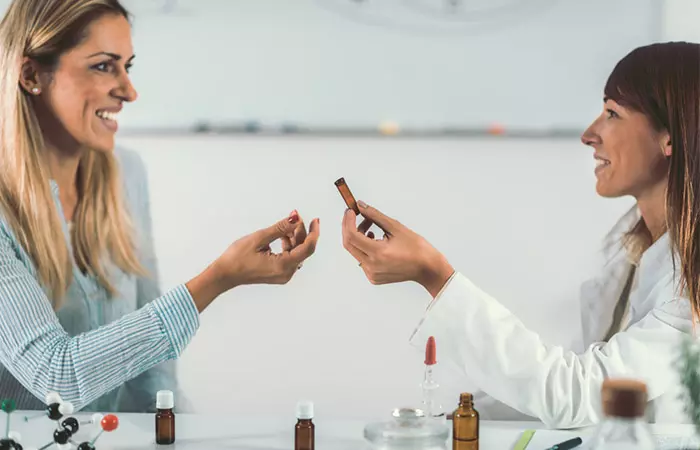
“Like cures like.” That’s the principle driving homeopathic treatments for skin and any other issues. Homeopathy treats you by using small doses of natural elements that produce the symptoms of the condition you have.
But medicines are supposed to cure and not aggravate the condition, right? The idea behind the homeopathic treatment method is to stimulate your immune system so that it heals your body naturally. This means that if your immune system knows how to deal with skin issues, the chances are high that those issues will not recur.
Let’s take a look at the top homeopathic medicines for skin diseases, allergies, rashes, and other skin issues.
Note: Do NOT use any of the medicines without consulting a homeopathy practitioner. They will guide you about the dosage and the way to use the medicine for curing your problem.
Key Takeaways
- Heal your body by triggering the immune system with homeopathic treatment.
- It can help treat skin conditions and diseases with less chance of recurrence.
- Homeopathic medicines consist of minerals and poisons.
- Consult a homeopathic practitioner before you begin any treatment.
Top 16 Homeopathic Medicines For Skin Issues
1. Sulphur
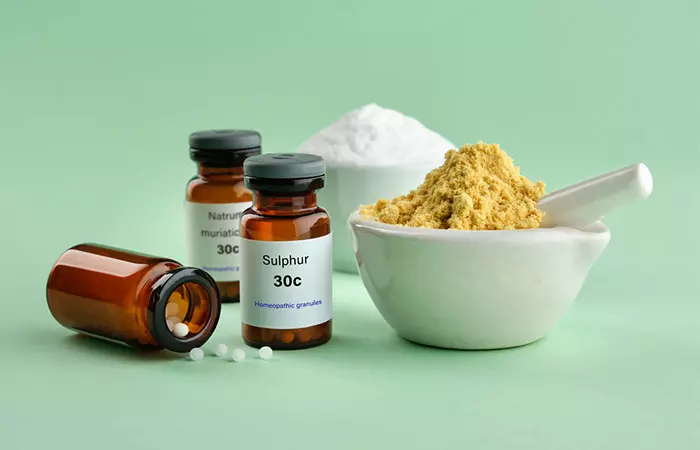
Sulphur is derived from the Flower of Sulphur. A study on 42 patients with atopic dermatitisi An inflammatory, itchy skin condition usually manifests as a rash on the arms and behind the knees in early childhood. found that in 60% of the cases, the patients responded positively to sulphur treatment (1). Apart from that, Sulphur is also used to treat:
- Bedsores
- Acne
- Boils
- Corns
- Freckles
- Herpesi A viral infection that frequently results in infectious sores around the mouth or on the genitalia.
- Itching and irritation
- Ringworm
 Did You Know?
Did You Know?2. Graphites
This is a carbon remedy, and it also contains a bit of iron. Samuel Hahnemann, the German physician, first used this remedy to treat severe eczemai A chronic skin condition that causes dryness and itchiness, impairs the skin barrier function, and flares up from time to time. along with other skin issues. Since then, Graphites has been successfully administered for a wide range of skin problems such as:
- Eczemai A chronic skin condition that causes dryness and itchiness, impairs the skin barrier function, and flares up from time to time.
- Skin fissures (cracks and flaky skin caused by extreme dryness or eczemai A chronic skin condition that causes dryness and itchiness, impairs the skin barrier function, and flares up from time to time. )
- Thick skin or scars (that appear after surgery or major wound)
A study proved that using Graphites helped improve the symptoms of atopic dermatitisi An inflammatory, itchy skin condition usually manifests as a rash on the arms and behind the knees in early childhood. to a great extent (2).
3. Sepia officinalis
This is the ink of cuttlefish, and in homeopathy, this medicine was primarily prescribed to women for treating postnatal depressioni A mood disorder following childbirth that results in extreme irritability and trouble developing a bond with the infant. . It is known as the medicine of menopause (according to the British Homeopathic Association). However, Sepia is often prescribed for painful skin issues. According to the National Center For Homeopathy, Sepia can be used for treating (3):
- Acne
- Eczemai A chronic skin condition that causes dryness and itchiness, impairs the skin barrier function, and flares up from time to time.
- Itching
- Prickly heat
- Scabies
- Rashes
- Freckles (hyperpigmentation)
- Pityriasisi A skin rash that typically starts as a massive patch on the chest, abdomen, or back and progresses to form a network of minor lesions.
- Boils
- Scars
4. Natrum muriaticum
Sodium chloride or common salt (yes, the one that you use for cooking) is the main mineral ingredient of Natrum muriaticum. This homeopathic medicine is the best remedy for controlling acne vulgaris (4). It can also be used to control:
- Blisters (from herpesi A viral infection that frequently results in infectious sores around the mouth or on the genitalia. and eczemai A chronic skin condition that causes dryness and itchiness, impairs the skin barrier function, and flares up from time to time. )
- Rashes (eczemai A chronic skin condition that causes dryness and itchiness, impairs the skin barrier function, and flares up from time to time. rashes and sun-induced rashes or sun allergy)
5. Rhus toxicodendron
This is also known as Poison Ivy (yes, the same herb that gives you itches and rashes) and is a very unlikely remedy for several skin issues. This homeopathic medicine is usually administered for treating arthritis, but it can also be used for treating skin issues such as:
- Herpesi A viral infection that frequently results in infectious sores around the mouth or on the genitalia.
- Eczema
- Dermatitis
It relieves itching, burning sensation, and pain caused by skin diseases (5).
6. Arsenicum album
Arsenic trioxide is diluted to prepare this medicine. It is diluted until traces of arsenic are no longer found in it. This is a very effective (and widely used) treatment for arsenic poisoning (6). It treats arsenic poisoning symptoms, such as:
- Hyperpigmentation (in areas that are not exposed to sunlight)
- Excessive scaly skin (arsenical keratosis)
- Cancer induced by arsenic exposure
- Exfoliative dermatitisi Large-scale skin redness and peeling that might develop due to certain medications or underlying health problems.
This is also a very useful medicine for treating psoriasisi A non-contagious autoimmune disorder in which skin cells accumulate and develop into scales and dry, itchy areas. and chronic eczemai A chronic skin condition that causes dryness and itchiness, impairs the skin barrier function, and flares up from time to time. . That’s why it is considered one of the best homeopathy treatments for psoriasis.
7. Cantharis
This medicine is prepared from the extracts of an iridescent green beetle that contains Cantharidin, a toxic substance that causes blisters. In homeopathy, this is a beneficial medicine for:
- Minor skin burns
- Blisters that itch and burn
Upon application, it has an analgesic effect and relieves pain and promotes healing (7).
8. Ranunculus bulbosus
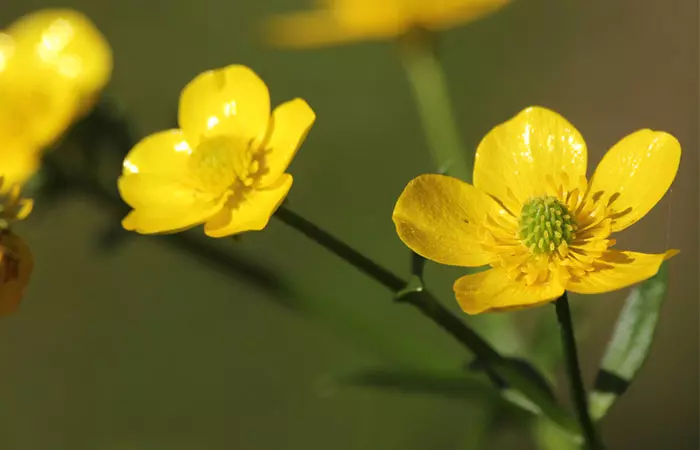
Ranunculus bulbosus or buttercups are pretty yellow flowers, but they are very toxic. In homeopathy, these are primarily used for treating muscle tissue and skin related issues (8). It may also help treat hard corns and reduce symptoms like itching and pain caused by the corn (9):
- Eczemai A chronic skin condition that causes dryness and itchiness, impairs the skin barrier function, and flares up from time to time.
- Herpesi A viral infection that frequently results in infectious sores around the mouth or on the genitalia. zoster
- Calluses
 Trivia
Trivia9. Hepar sulphuris
Do you have injuries that are healing slowly? Or flaky skin or eczemai A chronic skin condition that causes dryness and itchiness, impairs the skin barrier function, and flares up from time to time. ? If yes, Hepar sulphuris (or Hepar sulph) can be the remedy for you. This medicine is prepared from the calcium from the inner layers of oysters and the ashes of flowers of sulphur. It is effective for:
- Cracked skin or eczemai A chronic skin condition that causes dryness and itchiness, impairs the skin barrier function, and flares up from time to time.
- Acne
- Cold sores
- Painful abscesses
It helps in inhibiting the growth of Staphylococcus aureus, the acne-causing bacteria (10).
10. Thuja occidentalis
This plant is also known as white cedar and is generally grown as an ornamental plant. This is mainly used in homeopathy as a mother tincture (an herbal extract that has the lowest potency).
This medicine is used for treating verruca Vulgaris (or warts). This skin issue is caused by Human papillomavirus (11).
11. Mezereum
This medicine is derived from the bark of a shrub called Mezereon. It is ingested to treat toothache and headache.
However, in his book, Samuel Hahnemann notes that Mezereum is used for treating Crusta lactea (12). This skin condition is usually noticed in infants. It is seborrhoeic dermatitis, where the skin on the scalp and around the ears and eyes experiences a greasy, scaly redness and flakiness. In extremely rare cases, it may turn severe.
12. Nitricum acidum
This is a mineral acid, and as a homeopathic remedy, Nitricum acidum is very effective in treating warts and skin lesions (13). It has also demonstrated efficacy in treating:
- Mercury abuse
- Cracks and skin fissures
- Ulcers that bleed easily
It is often used to deal with gum issues and bad breath and for treating sores in the corners of the mouth.
13. Oleander
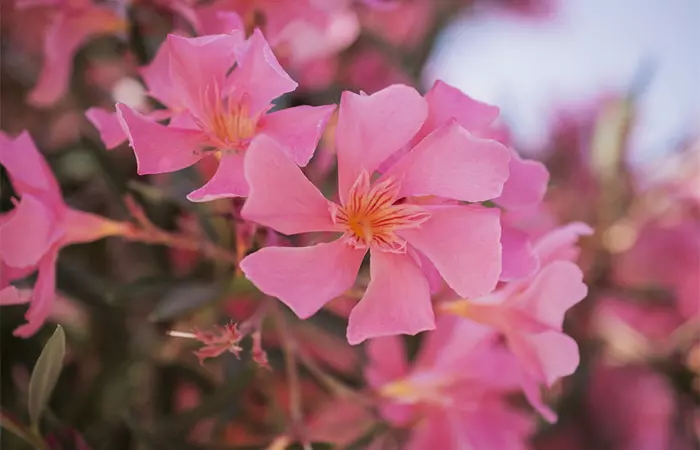
This homeopathic medicine is prepared from the extracts of Nerium oleander, a very poisonous garden shrub. The extracts contain high levels of antioxidants that protect the skin cells and help in reducing oxidative stress. This medicine has been used for its antibacterial, antifungal, antiviral, and antioxidative benefits for ages. It is rich in flavonoids, vitamins, and amino acids that reduce inflammation (14). Oleander is effective in treating:
- Eczemai A chronic skin condition that causes dryness and itchiness, impairs the skin barrier function, and flares up from time to time.
- Dandruff
- Psoriasisi A non-contagious autoimmune disorder in which skin cells accumulate and develop into scales and dry, itchy areas.
- Herpesi A viral infection that frequently results in infectious sores around the mouth or on the genitalia. zoster
It is also beneficial for treating food allergies and colitisi An inflammatory bowel disease that causes inflammation and sores in the colon (large intestine) and leads to chronic abdominal pain. .
14. Psorinum
This medicine is prepared from the fluid collected from the blisters in the skin affected by scabies. It is a very potent remedy for a range of skin issues and is pretty effective in treating:
- Allergy
- Dermatitis
- Eczemai A chronic skin condition that causes dryness and itchiness, impairs the skin barrier function, and flares up from time to time.
- Scabies
- Ulcers and lice infestation
However, Psorinum shows remarkable results in treating vitiligo, a condition marked by progressive discoloration of the skin. A study shows that continuous use of Psorinum can cure vitiligo patches and make them pigmented again (15).
15. Kali muriaticum
It is also known as potassium chloride and is a very effective remedy for treating eczemai A chronic skin condition that causes dryness and itchiness, impairs the skin barrier function, and flares up from time to time. . As per the National Center for Homeopathy, you can use Kali muriaticum to manage (16):
- Eczemai A chronic skin condition that causes dryness and itchiness, impairs the skin barrier function, and flares up from time to time.
- Warts
- Herpesi A viral infection that frequently results in infectious sores around the mouth or on the genitalia.
- Ulcerations
- Follicular inflammationi A prevalent skin condition in which hair follicles (cells enclosing cavities from where hair grows) is inflamed.
- Skin abscesses
Dr. Wilhelm Heinrich Schuessler, a German doctor, introduced Kali muriaticum to homeopathy. He believed that the loss of this element could affect the epidermis (top layer of skin) and causes irritation.
16. Apis Mellifica
Apis Mellifica is a homeopathic remedy made from Western honeybee venom. It is recommended for therapeutic application for various skin conditions, such as acne, dermatitis, and psoriasis. Research shows its anti-inflammatory, antibacterial, antiviral, antifungal, and anticancer properties (17). It is efficient in combating pathogens such as bacteria, fungi, and viruses which are responsible for skin diseases such as the following:
- Headaches
- Bee stings
- Bites
- Itching
- Skin allergies and rash
- Measles
- Skin burns
- Abscesses
- Edema
- Urine retention
- Inflammation
- Sore throat
- Baldness
- Inflammatory diseases of eyes and ears
It is worth noting that there are no documented side effects associated with it (17).
Homeopathic medicines are considered safe, but there are risks of adverse effects that you need to be aware of.
Risks Of Using Homeopathic Medicine For Skin Allergies

Homeopathic medicines are made using a wide range of ingredients that also include poisons and minerals. Without proper guidance, these remedies may cause unexpected side effects. To ensure safe use, always consult a healthcare provider or homeopathic practitioner before starting any new treatment, particularly if you are taking other medications.
Since most of the medicines are diluted with water, they do not cause any side effects. However, they can interact with other drugs you are taking. Moreover, if these medicines are poorly manufactured, you may experience side effects.
Homeopathy medicines are regulated by the FDA and manufactured and marketed with FDA approvals. Avoid purchasing any product from a manufacturer that doesn’t have FDA approval. Also, avoid self-medication. Before switching to homeopathic treatment for skin disease, check with your doctor.
Infographic: Homeopathy Treatments For Skin Diseases
Are you looking for a natural treatment option to rid your skin of irritation, rashes, and other issues? Homeopathy is a gentle, natural treatment method that can provide relief without the use of harsh chemicals. It is a safe and effective treatment. The following infographic contains a list of the 8 homeopathic medicines that help treat skin issues. Consult your doctor before using them.
Some thing wrong with infographic shortcode. please verify shortcode syntax
Homeopathy has a variety of medicines that try to address the issue from the roots and make your body capable of fighting it. It has medicines that can treat various skin sensitivity ailments like rashes, allergies, etc. According to homeopathy, the method aims to stimulate the immune system and let it heal naturally. The wide range of medicines that help treat skin issues includes sulfur, graphites, sepia officinalis, cantharis, oleander. Though these medicines are safe to use, there can be serious side effects if used without the guidance of a medical practitioner.
Frequently Asked Questions
How frequently should I take homeopathic medicine?
The dosage is decided by the homeopathic practitioner, and you need to follow their instructions.
Do homeopathic medicines cause side effects?
They may interact with any other medication you are taking and cause side effects. They may also cause adverse reactions if not taken with care as directed by the homeopathic practitioner.
Are homeopathic medicines safe to use while using other medications?
No, they are not, unless recommended by a doctor.
Can homeopathy cure skin allergies permanently?
Possibly not. While homeopathy can be used as a long-term mode of therapy to cope with allergies, it is not a permanent solution.
Is homeopathy best for fungal infection?
Some of the homeopathic remedies for fungal infection include Calcarea carbonica, Natrum muriaticum, Kali bichromicum, and Pulsatilla.
Is homeopathy better than allopathy?
There is a lack of scientific evidence to suggest that one is better than the other.
Does homeopathy affect kidneys?
There is a lack of scientific evidence suggesting that homeopathic medicine affects the kidneys.
Which homeopathic medicine is best for anti aging?
Some common homeopathic medicines that provide healing and rejuvenation to aging skin conditions like wrinkles and age spots are, Silicea, Kali Bromatum, Aurum Mur, Natrum Mur, Abrotanum, Calcarea Phos, and Lycopodium.
Illustration: Best Homeopathy Medicines For Skin Diseases
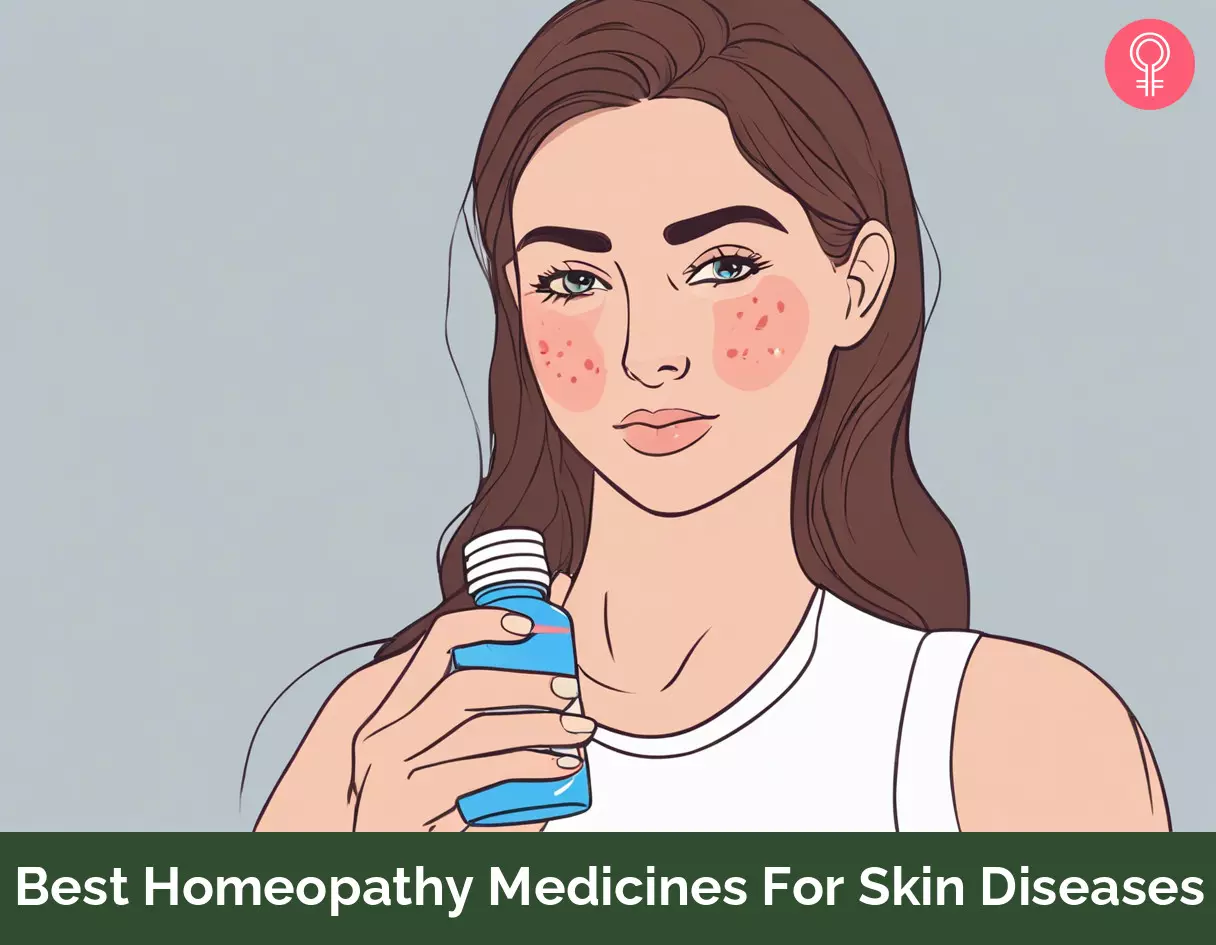
Image: Stable Diffusion/StyleCraze Design Team
Learn about the most effective skin allergy treatments from an expert homeopathic doctor. Get the latest tips and advice on how to manage your allergies too. Check out the video below for more information.
References
Articles on StyleCraze are backed by verified information from peer-reviewed and academic research papers, reputed organizations, research institutions, and medical associations to ensure accuracy and relevance. Read our editorial policy to learn more.
- Prospective observational study of 42 patients with atopic dermatitis treated with homeopathic medicines., Homeopathy, US National Library of Medicine, National Institutes of Health.
https://pubmed.ncbi.nlm.nih.gov/22226311/ - Homoeopathic treatment in a case of co-morbid atopic dermatitis and depressive disorder, Indian Journal of Research in Homeopathy.
https://www.ijrh.org/cgi/viewcontent.cgi?article=1442&context=journal#:~:text=Successful%20treatment%20of%20comorbid%20AD,Kent’s%20Philosophy’s%20second%20prescription. - Cuttlefish bone/ sepia officinalis (kafe dariya): recovery of long forgotten Unani drug, Korea Science.
http://koreascience.or.kr/article/JAKO201935236776953.pdf - Utility of Homoeopathic Repertory in Treatment of Acne Vulgaris, International Journal of Science and Research.
https://www.ijsr.net/archive/v6i4/30031707.pdf - In vivo study of the anti-inflammatory effect of Rhus toxicodendron, Homeopathy, ScienceDirect.
https://www.sciencedirect.com/science/article/pii/S1475491607000227 - A Follow-Up Study on the Efficacy of the Homeopathic Remedy Arsenicum album in Volunteers Living in High Risk Arsenic Contaminated Areas, Evidence-Based Complementary and Alternative Medicine, Hindawi.
https://www.hindawi.com/journals/ecam/2011/129214/ - Cantharis in the early treatment of minor burns, Archives of Emergency Medicine, The BMJ.
https://emj.bmj.com/content/6/4/259 - Homsopathic Materia Medica by William Boericke, M.D, Medi-T.
http://www.homeoint.org/books/boericmm/r/ran-b.htm - Corns of feet: Can homoeopathy be a better alternative? A narrative review
https://jish-mldtrust.com/corns-of-feet-can-homoeopathy-be-a-better-alternative-a-narrative-review/ - Impetigo and Homeopathy- A Case Study, Medicine Case Study, The Publishing House of The Romanian Academy.
https://acad.ro/sectii2002/proceedingsChemistry/doc2016-2/art03.pdf - Successful treatment of verruca vulgaris with Thuja occidentalis in a renal allograft recipient, Indian Journal of Nephrology, US National Library of Medicine, National Institutes of Health.
https://www.ncbi.nlm.nih.gov/pmc/articles/PMC3764712/ - The chronic diseases, their specific nature and their homeopathic treatment : antipsoric remedies By Samuel Hahnemann, Homeopathy Collection, Taubman Medical Library.
https://quod.lib.umich.edu/h/homeop/2448826.0004.001/230?rgn=full+text;view=image;q1=crusta+lactea - Effect of Nitric Acid on Cutaneous and Plantar warts–a case report, Journal of Young Pharmacists.
https://jyoungpharm.org/article/836 - Antioxidant, anti-inflammatory, anti-apoptotic, and skin regenerative properties of an Aloe vera-based extract of Nerium oleander leaves (nae-8®), Clinical, Cosmetic and Investigational Dermatology, US National Library of Medicine, National Institutes of Health.
https://www.ncbi.nlm.nih.gov/pmc/articles/PMC4427598/ - Homeopathic Treatment of Vitiligo: A Report of Fourteen Cases, The American Journal of Case Reports, US National Library of Medicine, National Institutes of Health.
https://www.ncbi.nlm.nih.gov/pmc/articles/PMC5723025/ - Summary of Kali muriaticum for the Materia Medica Pura Project, American Journal of Homeopathic Medicine.
https://www.centerforintegralhealth.com/wp-content/uploads/2019/10/Summary-of-Kali-muriaticum-AJHM-Summer-2019.pdf - Apis Mellifica — an effective insect drug
https://applications.emro.who.int/imemrf/Hamdard_Med/Hamdard_Med_2016_59_4_20_32.pdf
Read full bio of Dr. Zeel Gandhi
Read full bio of Ramona Sinha
Read full bio of Eshna Das
Read full bio of Shiboli Chakraborti





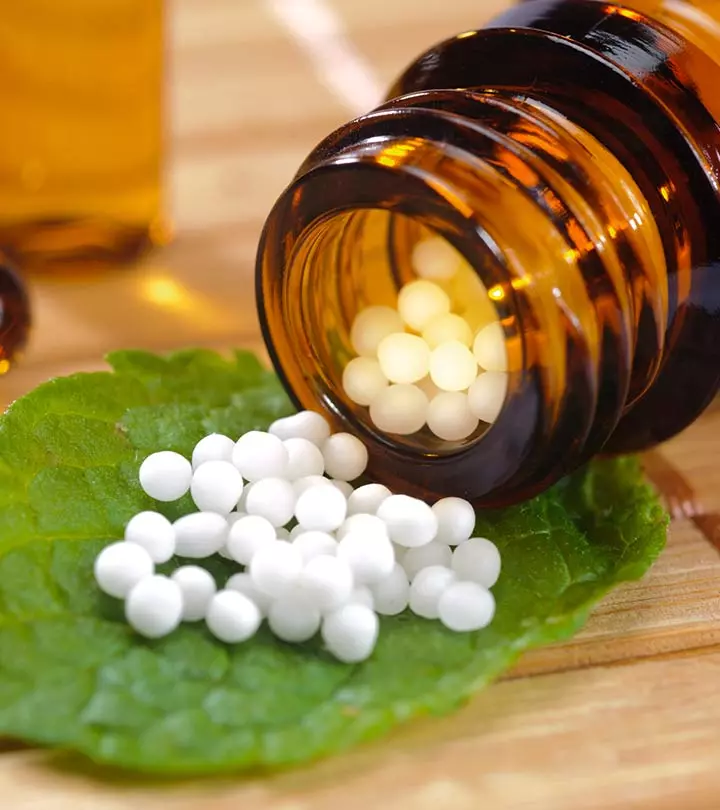
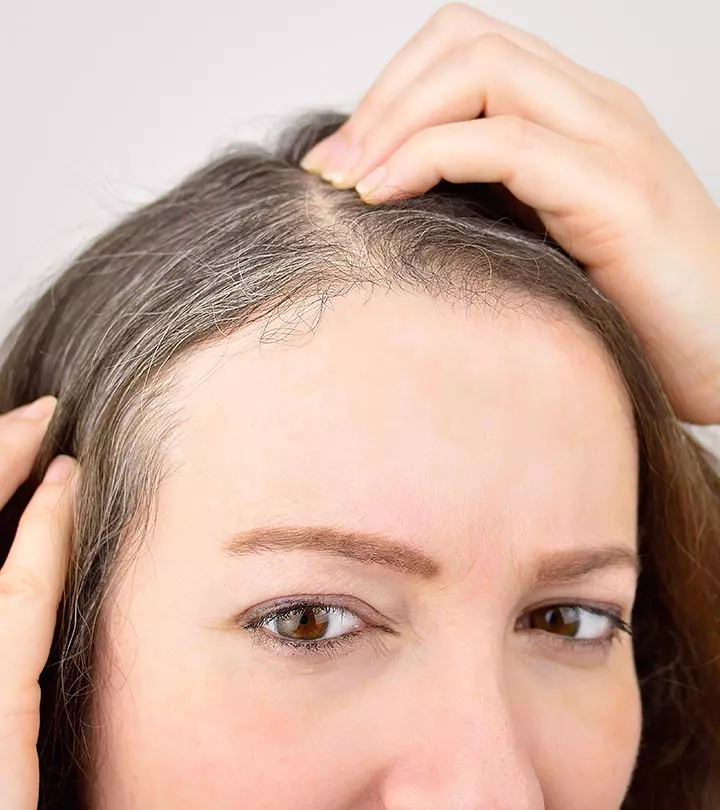
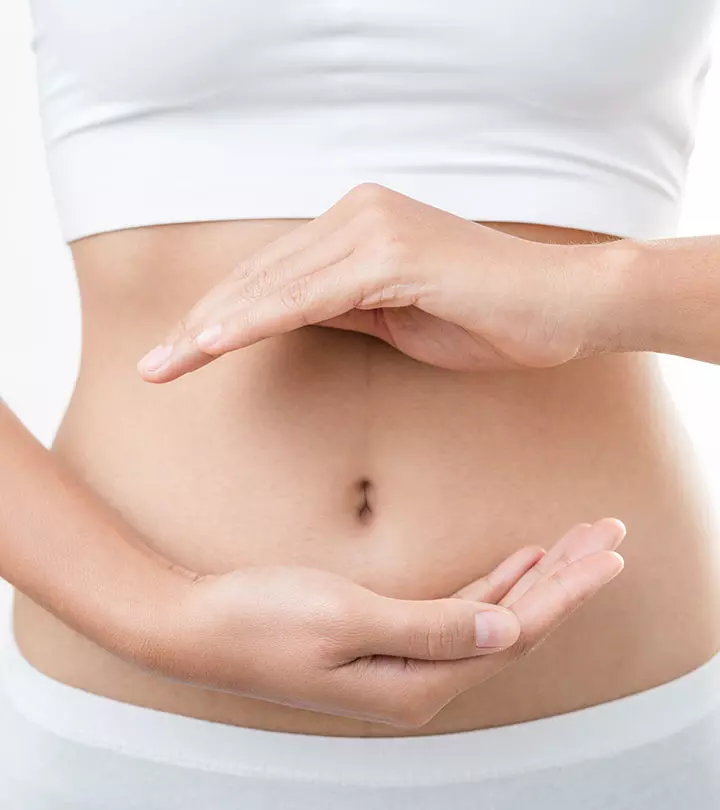
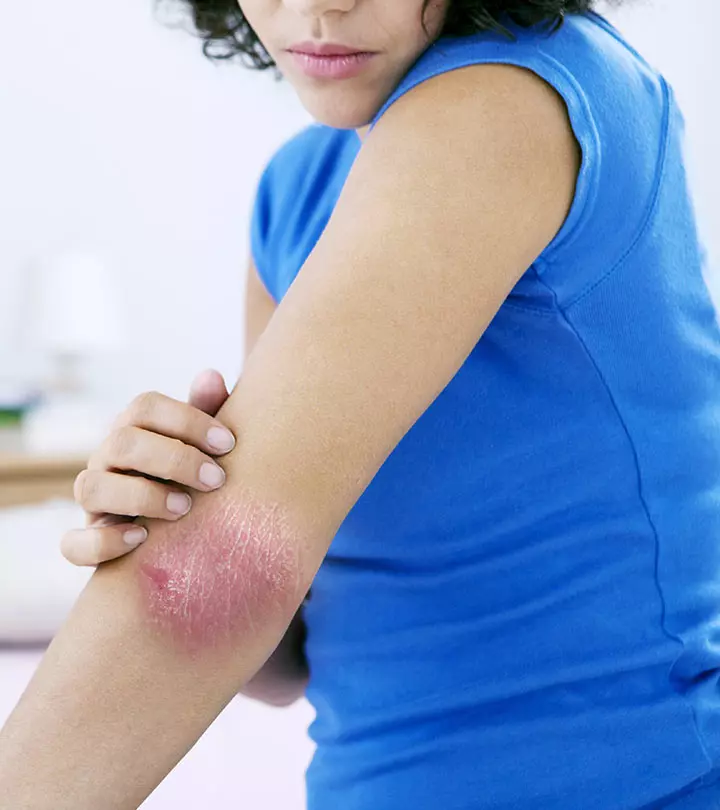
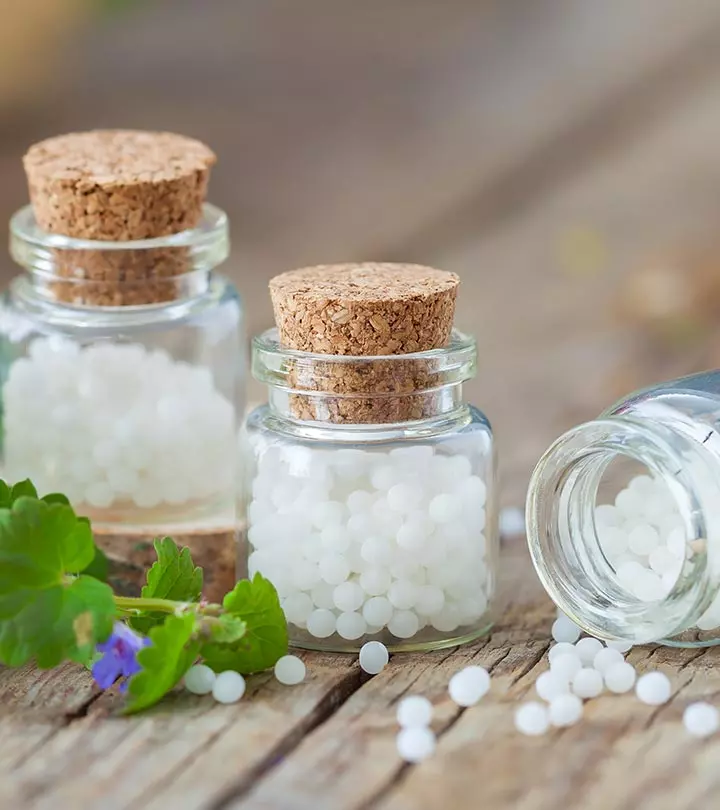
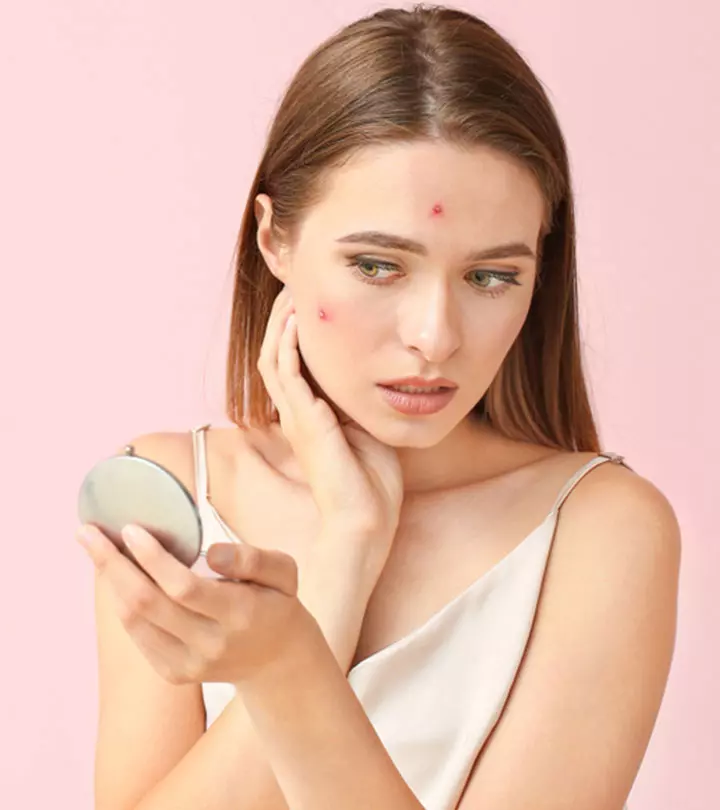
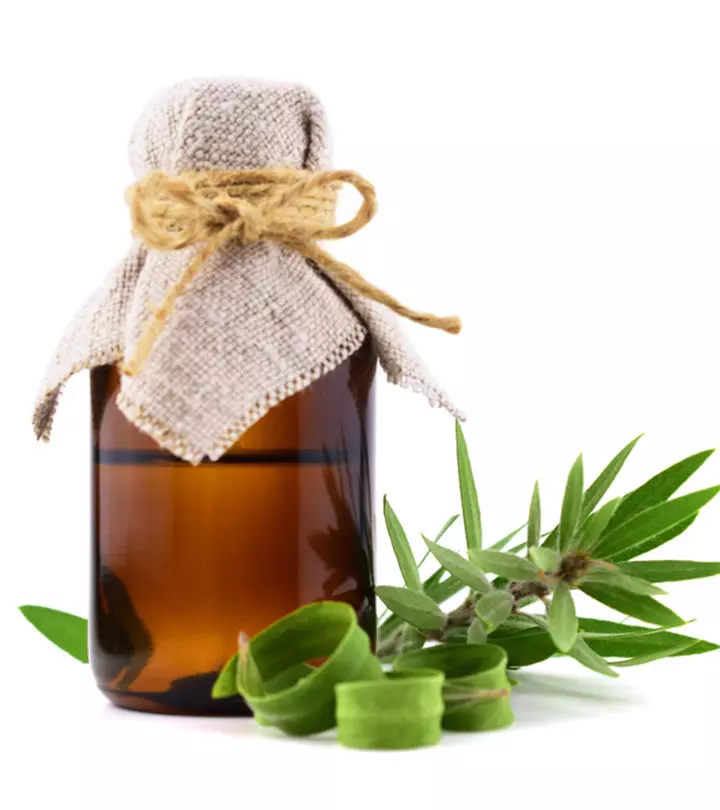
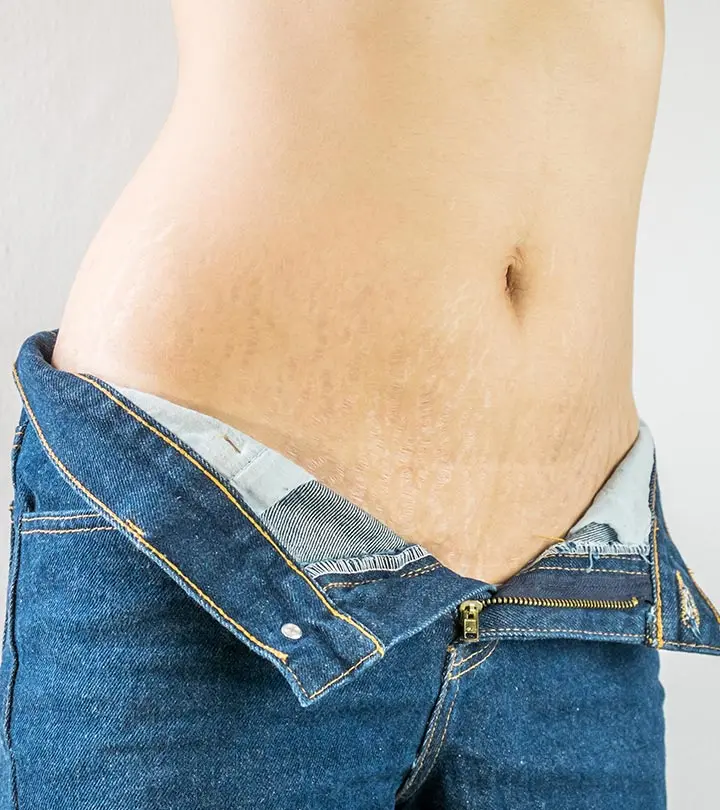
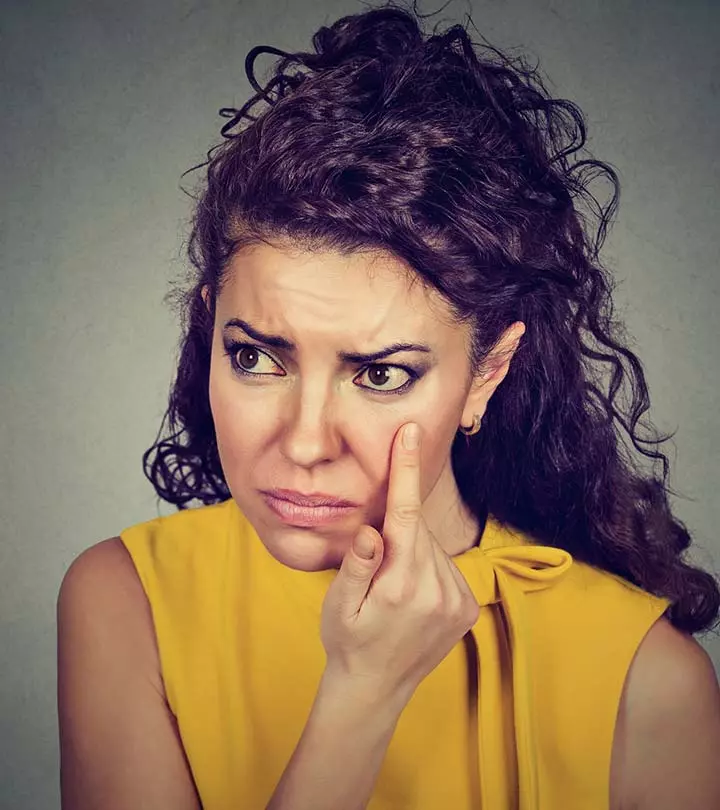
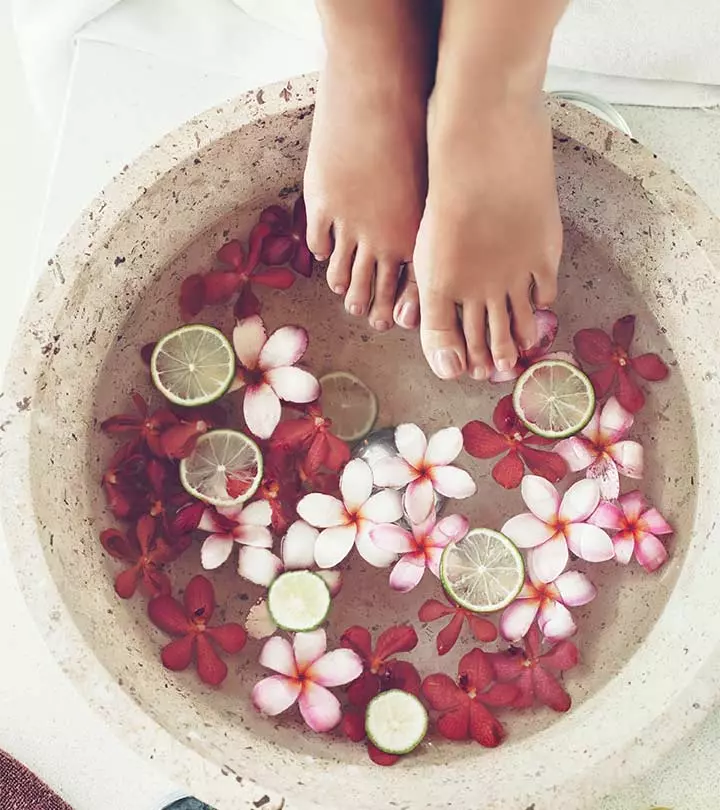
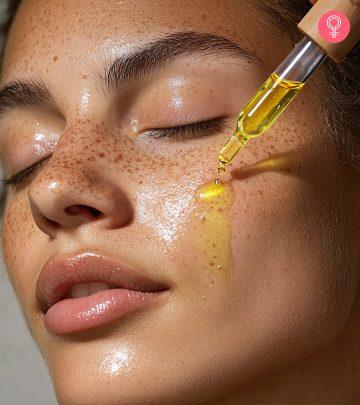
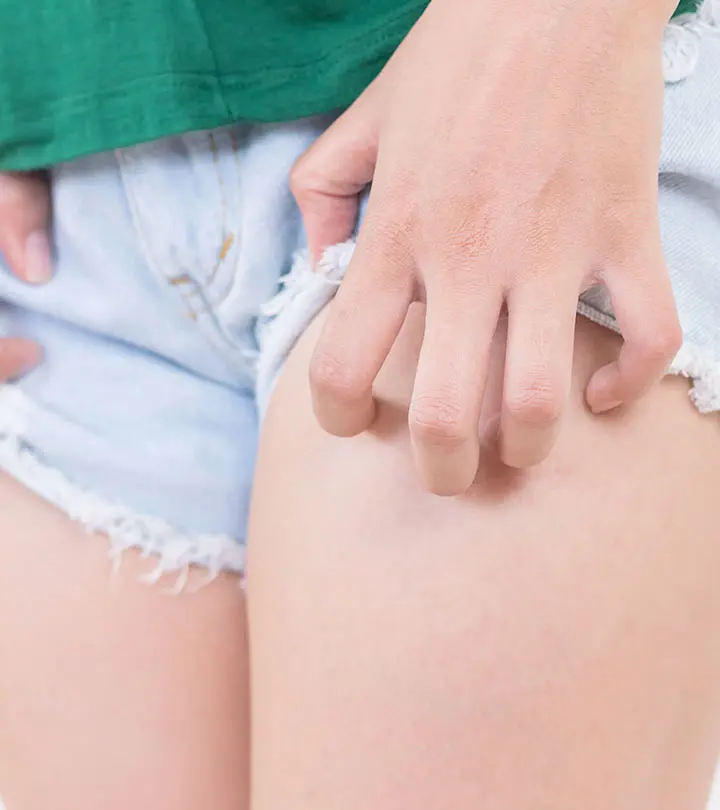

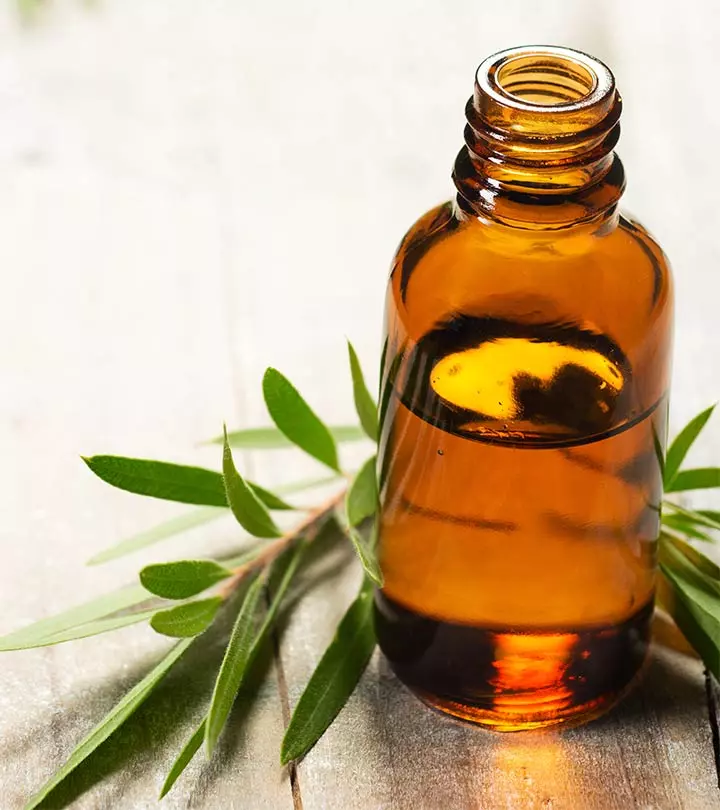
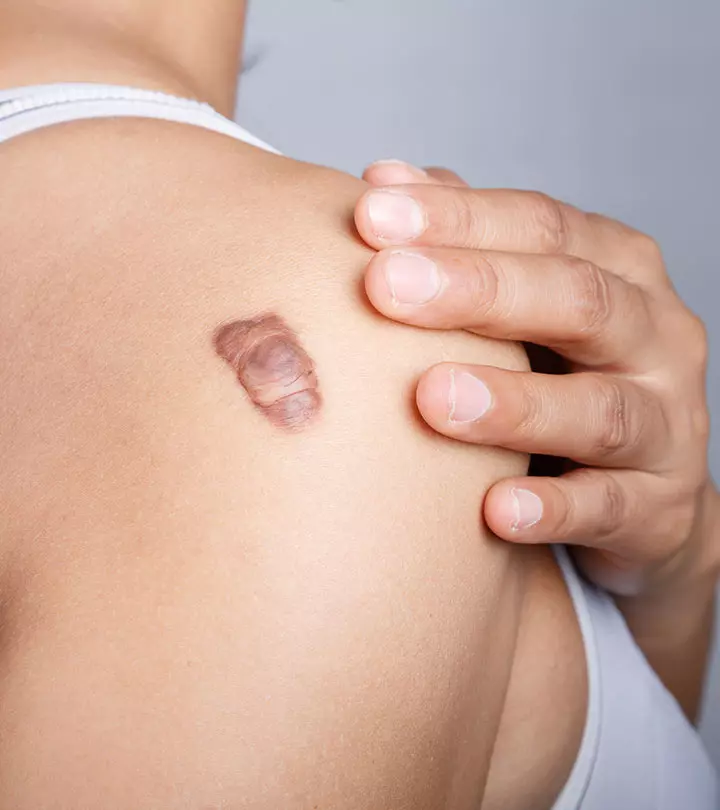
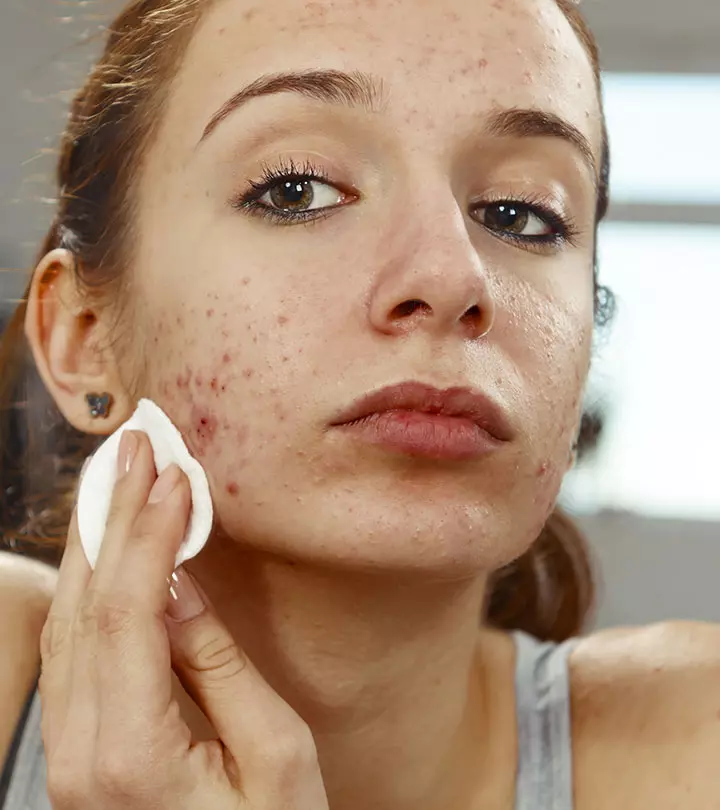
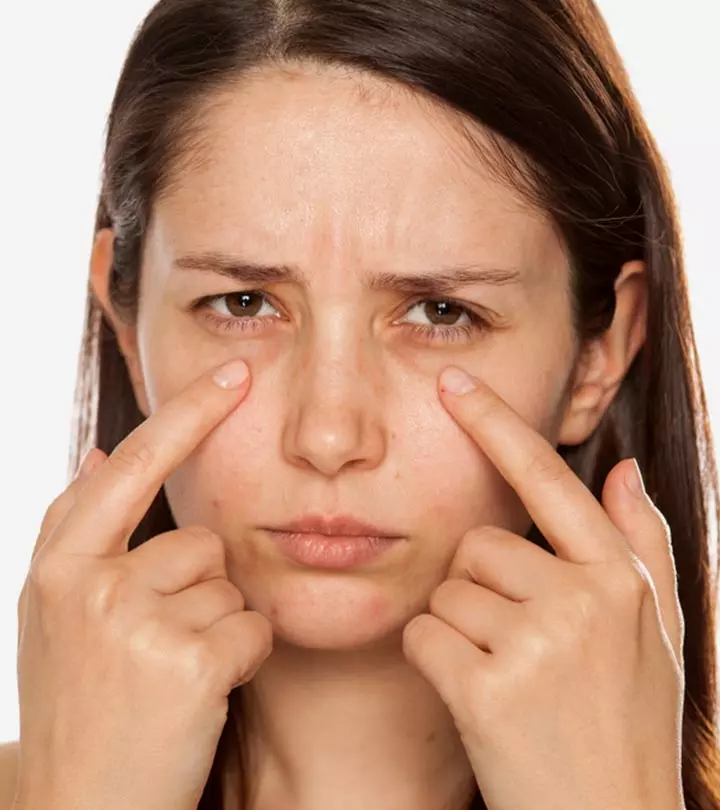
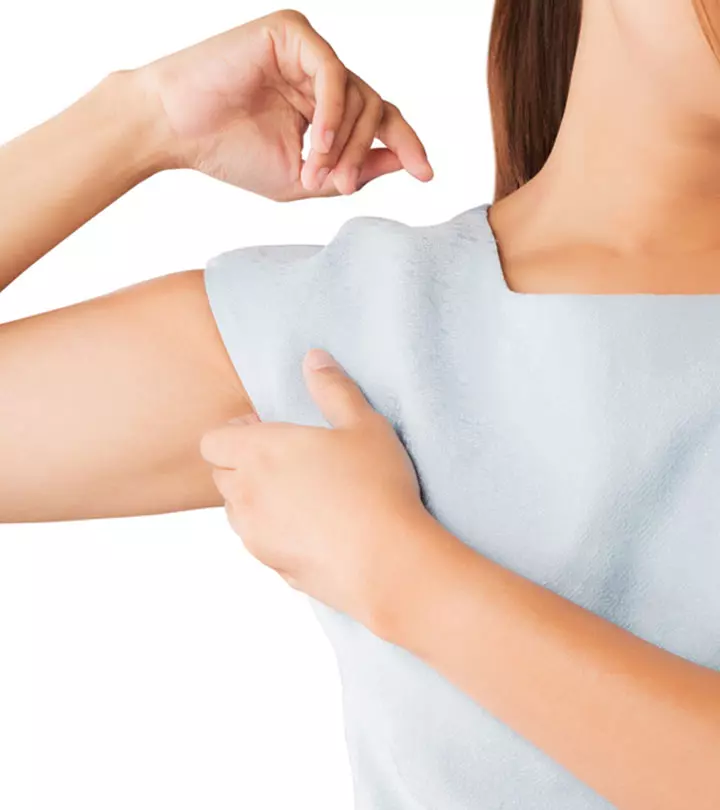
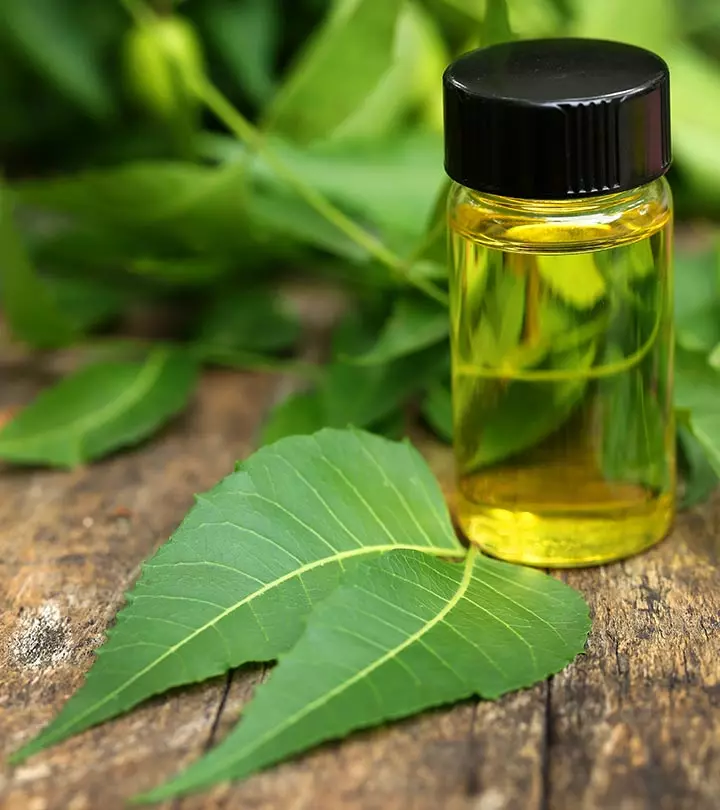
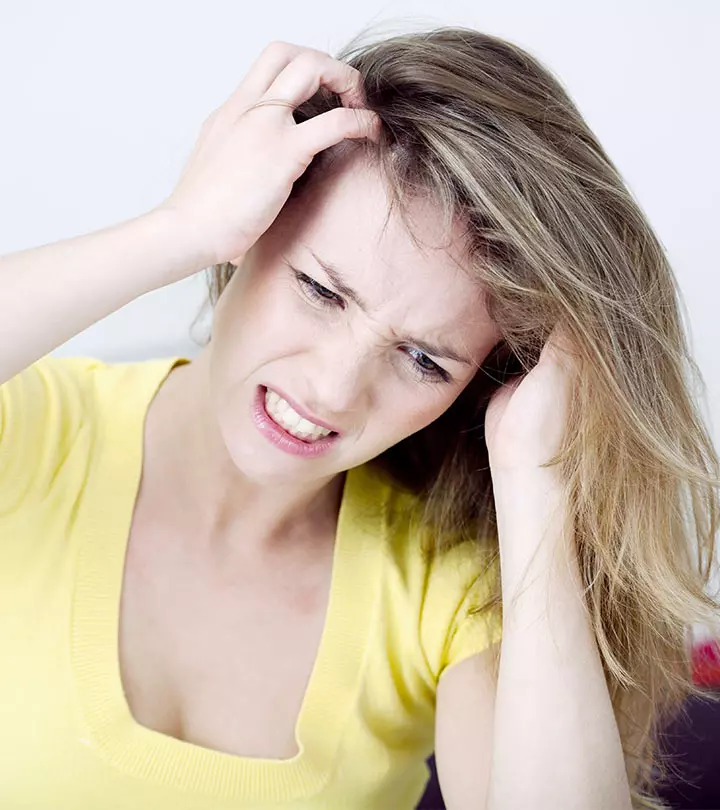
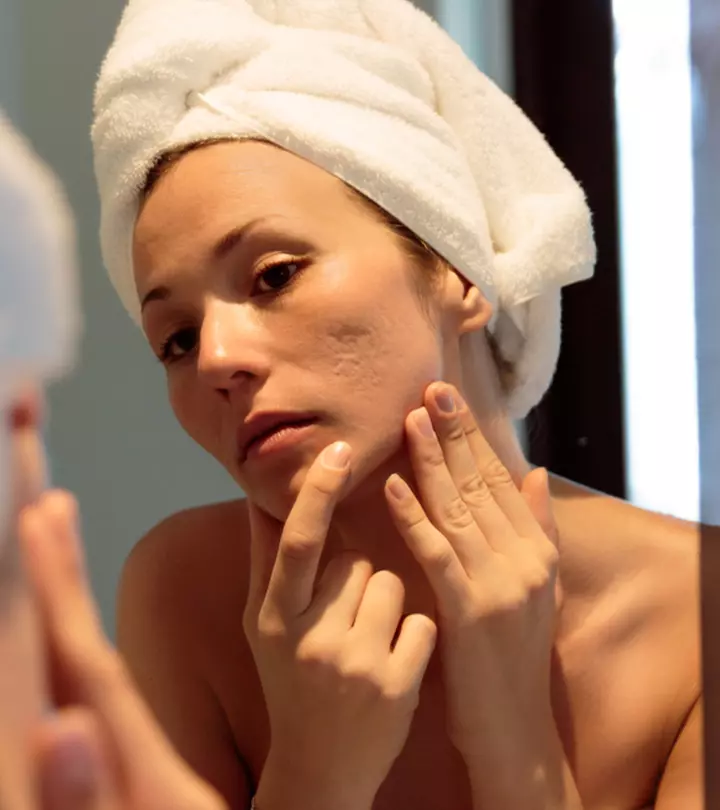

Community Experiences
Join the conversation and become a part of our empowering community! Share your stories, experiences, and insights to connect with other beauty, lifestyle, and health enthusiasts.